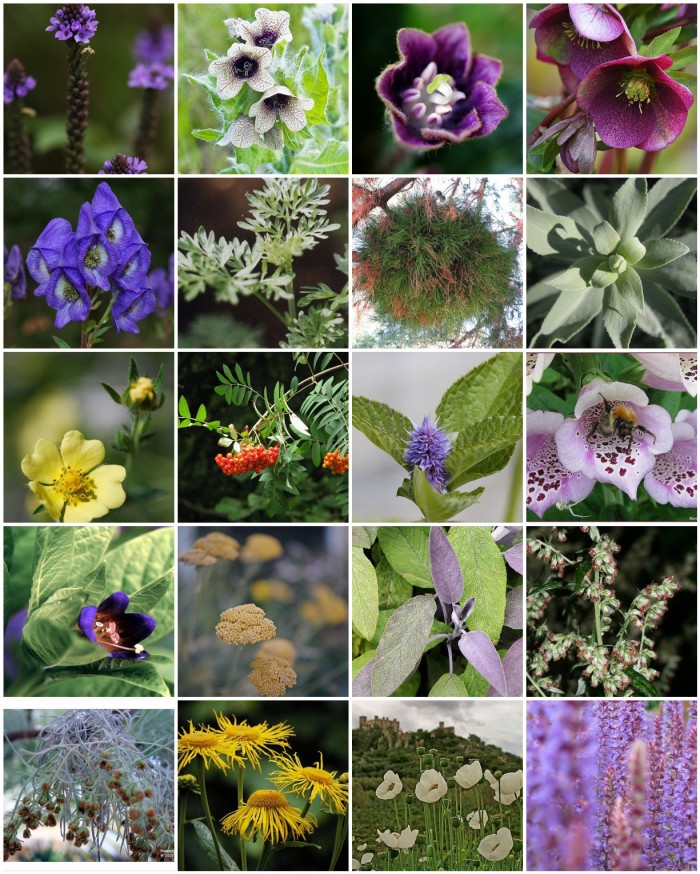It’s Freaky Friday and I thought I might see what witches would plant in their gardens. It is actually quite pretty.
Clary Sage, White-seeded Poppy, Elfwort, Mugwort, Sage, Vervain, Yarrow, Belladonna, Foxglove, Henbane, Hyssop, Rowan, Rue, White Sage, Witch’s Broom, Wormwood, Monkshood, Hellebore, and Mandrake (yes, it makes me think of Harry Potter too – it’s picture #3 – and the roots really do look like little men)

1. Vervain, 2. Hyocyamus niger ‘Black Henbane’, 3. Mandragora autumnalis, 4. Lenten Rose, 5. Monkshood, 6. Artemisia absinthium, 7. Witches’ Broom!, 8. white sage, 9. these hearts are for you …, 10. Wild Rowan, 11. Anise hyssop // Dropplant, 12. I say (he’s an English bee) Do you mind buzzing off with that camera … I’m awfully busy right now with that little critta down there!, 13. Beautiful poison, 14. summer has left the building, 15. Purple Sage, 16. Mugwort, 17. Allegro Blues…, 18. Elfwort 2 / Griekse alant 2, 19. White Poppies, 20. salvia nemorosa (Balkan Clary Sage)
It is quite pretty (at least on an individual level) and I am inspired to know more….
Here is a little excerpt from an article called Gothic Gardening: The Witches Garden…
Mandrake. A plant with many fables surrounding it. The twisted, elaborate root was thought to look like a man, and people thought it screamed when it was pulled out of the ground. Dogs were used to pull roots up, because supposedly the dog always died afterwards. This root has a narcotic effect.
Vervaine. Better known as verbena, this was used for love potions. It had to be dug up with a piece of gold or a stag’s horn on the Saints Days, June 27 and July 25. Often used with endive seed.
Opium Poppy. This isn’t illegal to grow, unless you have large fields of poppies. Shakers used to give an opium syrup to high strung children. This poppy is the symbol of sleep and dreams. My favorite quote is from Jean Cocteau: “Opium is the only vegetable substance that communicates the vegetable state to us.”
Yarrow. Used for a wound poultice with plantain leaves. This was still used during the Civil War. This was considered one of the devil’s favorite plants, and was known as Devil’s Nettle.
Deadly Nightshade. Not to be confused with the non-deadly variety, this one (Atropa belladonna) is related to the potato, the tomato, and many other poisonous plants, and is also known as Belladonna. It’s the source of the drug atropine, which has wide ranging nervous effects. It has purplish-red flowers and poisonous berries. Once ladies would use belladonna extract too dilate their pupils.
Henbane. A close relative of Thorn Apple and the nightshades, henbane was also used in the preparation of “flying ointments”
Happy Halloween!
Where have you been all my life?
Wonderful post and FANTASTIC blog!
Chock full of inspiration – wow!
Color me very impressed…
Thanks Germi!! I am very flattered by your flattering remarks. -Best – R
These are some of the most beautiful photos I’ve ever seen. I have to draw with and visual in front of me, and these have given me some great inspiration. I even got a lesson on a witch’s garden. Love it, love it.